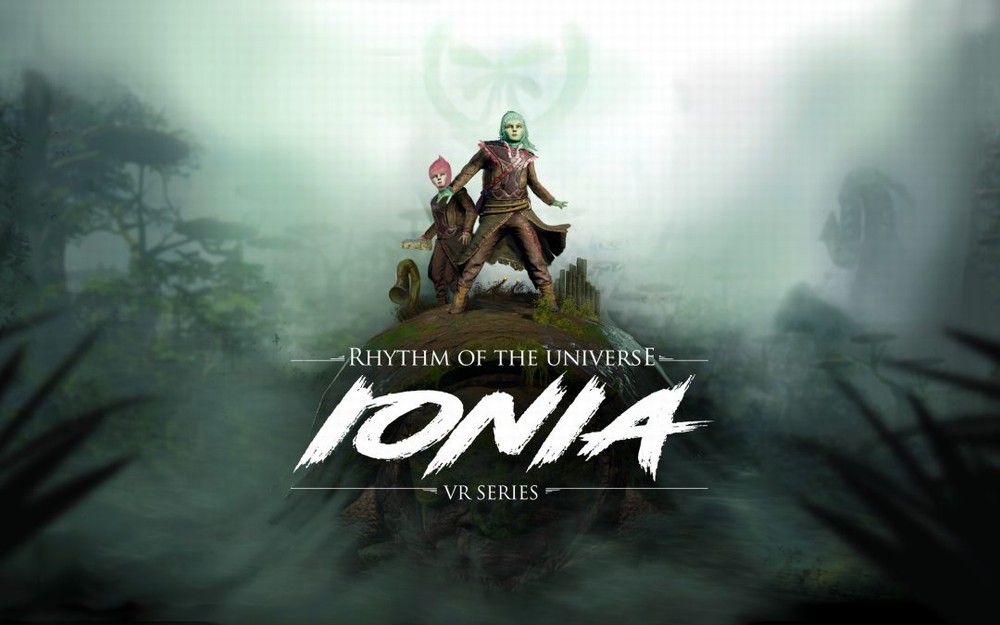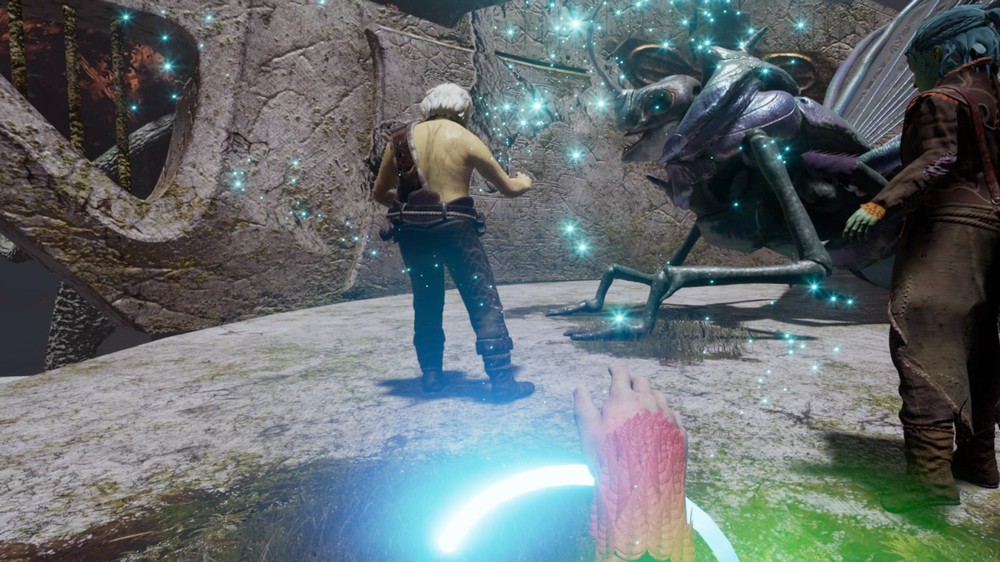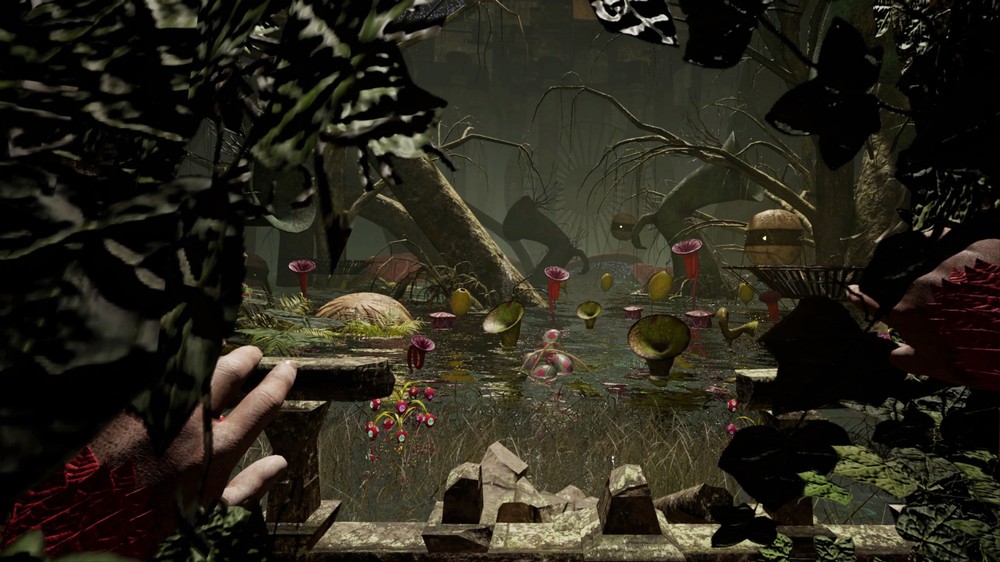Having just finished Rhythm of the Universe: Ionia, I can easily say this is one of the top three best-looking VR “experiences” I have ever played, but it drastically falls short of being called a game. Clocking in at around 90 minutes, this seems more like a demo or perhaps the first installment in an episodic series; wishful thinking on my part perhaps. From start to finish I was totally captivated by the world that was unfolding before me; part Avatar, part Jurassic Park, and part Myst. There was majestic music, great sound effects, and convincing voice acting that all combined to create a wonderfully complex and immersive environment, yet the one thing lacking was actual gameplay.
Don’t get me wrong; VR is a great place to experience these “walking simulators” type games, and in all fairness Ionia is only $15 and .75 of each purchase helps support Wildlife Warriors USA, but if you are going into this expecting any significant gameplay you could be disappointed. I was, but only because I was so captivated by this enchanted world then unceremoniously ejected after four short chapters and a closing video from Robert Irwin.
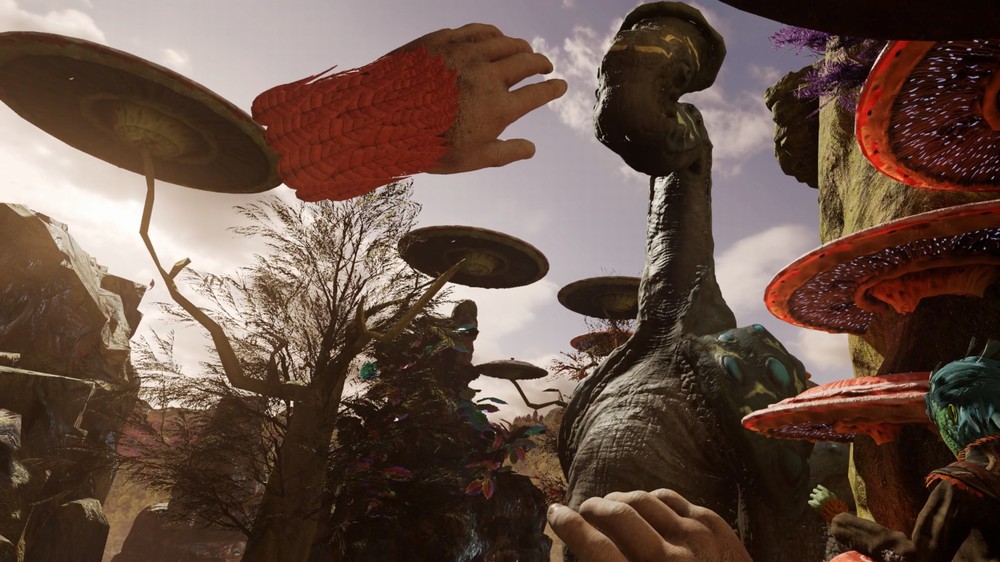 The story setup is interesting enough; you and your sister Allegra set off on a quest to heal the Harpa, a magical creature whose life essence is tied to the environment that is slowly being destroyed by an approaching army. Allegra leads you on most of this linear adventure; although you are left to explore and solve one puzzle on your own before reuniting. The world does open up slightly for a bit of exploration but most of the time you are on a very well defined path.
The story setup is interesting enough; you and your sister Allegra set off on a quest to heal the Harpa, a magical creature whose life essence is tied to the environment that is slowly being destroyed by an approaching army. Allegra leads you on most of this linear adventure; although you are left to explore and solve one puzzle on your own before reuniting. The world does open up slightly for a bit of exploration but most of the time you are on a very well defined path.
Puzzles are few and far between. There are a few xylophone puzzles where you must figure out the proper sequence of notes to play to advance the story. In one area you must search for three missing tablets and return them to their pedestal to reveal a pan drum that you then use to unlock the path to the next area. Most of the puzzles are music related and even the environments contain musical elements like giant toadstools that can be played like bongos.
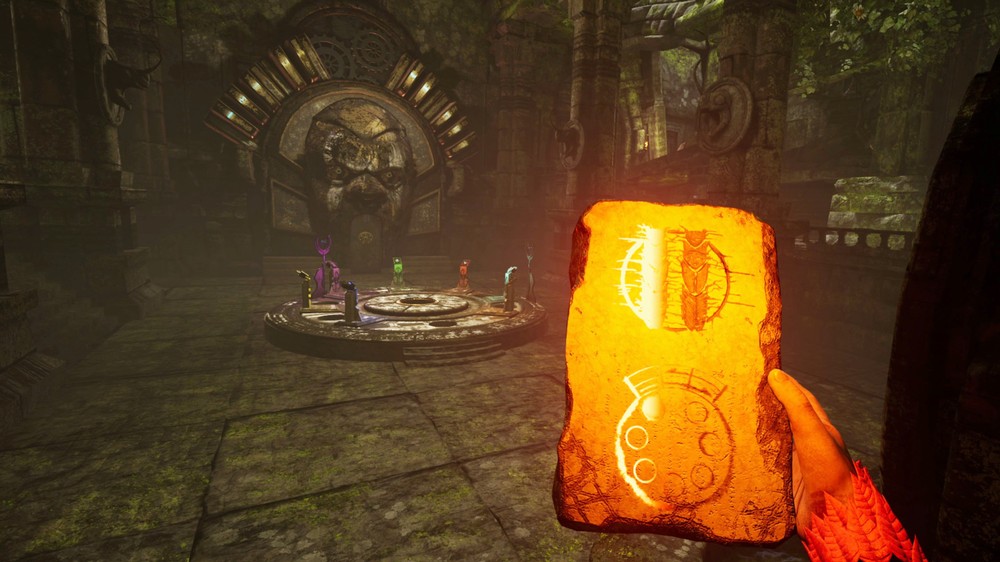 Navigating the world of Ionia is handled through old-school teleporting, which I really dislike but can fully understand given the quality of the visuals. Trying to move and turn in a continuous fashion would have tanked the framerate and likely caused motion sickness. Your only representation in the game is a pair of hands (desperately in need of a manicure) with surprisingly detailed gauntlets crafted from red leaves layered on your wrists. You can use these hands to grab items or grip vines and ladders to climb with actual climbing motions. While not terribly exerting, these brief moments of physicality are a refreshing change from an otherwise passive experience.
Navigating the world of Ionia is handled through old-school teleporting, which I really dislike but can fully understand given the quality of the visuals. Trying to move and turn in a continuous fashion would have tanked the framerate and likely caused motion sickness. Your only representation in the game is a pair of hands (desperately in need of a manicure) with surprisingly detailed gauntlets crafted from red leaves layered on your wrists. You can use these hands to grab items or grip vines and ladders to climb with actual climbing motions. While not terribly exerting, these brief moments of physicality are a refreshing change from an otherwise passive experience.
I played Rhythm of the Universe: Ionia on both the Vive and the Rift S with the usual expected results from both. My RTX3080 was plenty powerful to run the game with max settings (4) on all the options and I even cranked the resolution up to 1.5x and the game looked absolutely incredible. Regardless of the VR system your in-game controllers are replaced with hands, but as always I found the Oculus Touch felt a bit more natural. There are also plenty of dark areas in the world of Ionia, so the Vive’s screen door effect was more prominent in these areas. I’ll have to give the nod to Rift S, but the game is certainly enjoyable on either.
 Sadly, there is no real reason to replay Rhythm of the Universe: Ionia once finished unless you have friends over and want to dazzle them with one of the prettiest VR games available. There are no achievements or trading cards to unlock and no secrets or collectibles that I could find. If anything I would liken Ionia to a VR theme park experience. I have yet to visit Pandora in Disney World, but I could only dream it is half as wondrous as this. $15 is a small price to pay to experience Ionia; I’ve spent so much more on so much less, and even though is lacks a proper amount of gameplay and is over much too soon I still can’t help but recommend you check this out. And don’t be a jerk and refund the game once you’ve finished it. There is some serious artistic and visionary work happening here, and ROTU should be rewarded for their inspired creation.
Sadly, there is no real reason to replay Rhythm of the Universe: Ionia once finished unless you have friends over and want to dazzle them with one of the prettiest VR games available. There are no achievements or trading cards to unlock and no secrets or collectibles that I could find. If anything I would liken Ionia to a VR theme park experience. I have yet to visit Pandora in Disney World, but I could only dream it is half as wondrous as this. $15 is a small price to pay to experience Ionia; I’ve spent so much more on so much less, and even though is lacks a proper amount of gameplay and is over much too soon I still can’t help but recommend you check this out. And don’t be a jerk and refund the game once you’ve finished it. There is some serious artistic and visionary work happening here, and ROTU should be rewarded for their inspired creation.

